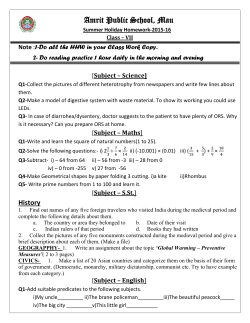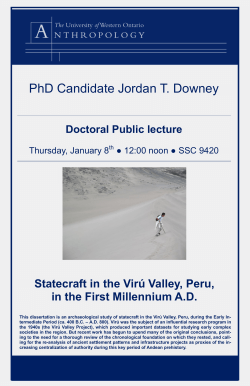
Due 04-17 Ch 12 Pause and Reflect Questions
Chapter 12 Pause and Reflect Questions 12.2.1: In which sectors of the economy do you or members of your family work? If in the service sector, in which types of services are these jobs? 12.2.1: What occurs in nature in the shape of hexagons? Google “naturally occurring hexagons.” Infer why human economic activities also create a hexagonal pattern. 12.2.2: According to the rank-size rule, the second-largest city in a country should have one-half the population of the largest city, and the tenth-largest city should one-tenth the population of the largest city. Does Peru follow the rank-size rule or the primate city rule? Google “most populous cities in Peru.” 12.2.3: When you order a pizza for carry out or delivery, do you get it from the nearest place? Why might you get it from a more distant location? 12.2.4: Identify an example of a periodic market in developed countries? 12.3.1: List the alpha, beta, and gamma cities that are nearest to you. How would you expect an alpha city such as Chicago to differ from Houston (beta) and Phoenix (gamma)? 12.3.2: When it is 3 P.M. on a Tuesday where you live, what time and day is it at a call center in India? Refer to Figure 1-11. 12.4.1: How might the presence of clustered rural settlements in New England have contributed to the region’s distinctive dialect of English noted in Chapter 5? 12.4.2: Infer what functions caves might have served for early humans, in addition to burying the dead. 12.4.3: Medieval walled cities were constructed near political boundaries. How far is the medieval walled city of Carcassonne, France, from an international boundary?
© Copyright 2025


















